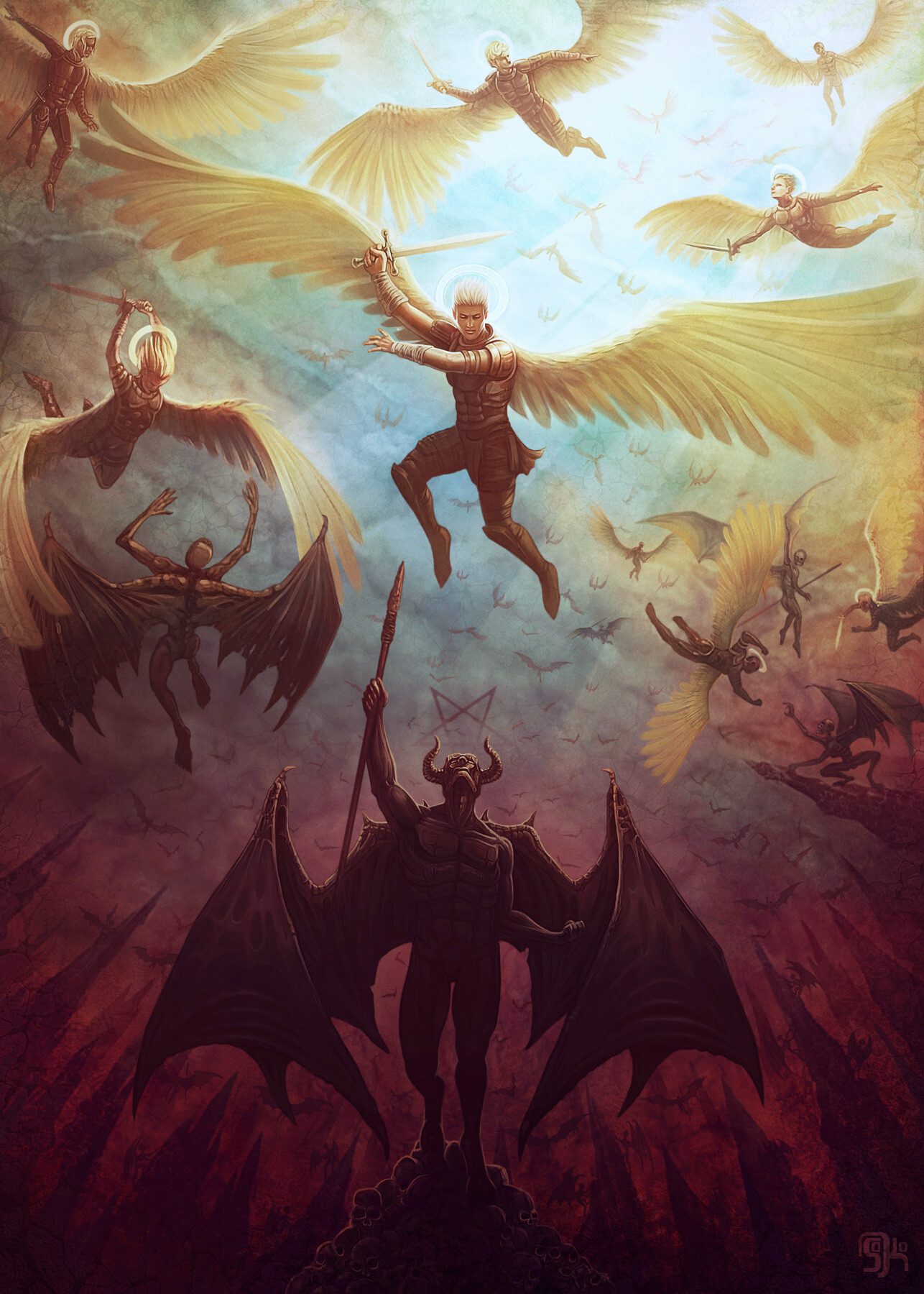Demons are a source of intrigue and mystery in mythology, but there are significant differences in how they are portrayed in Eastern and Western traditions. Eastern demons, such as the Oni in Japanese folklore, are malevolent spirits that cause destruction and chaos. In contrast, Western demons are typically associated with Satan or the Devil and seek to bring about chaos and destruction in the world. Western demons are often depicted with reptilian features and wings, while Eastern demons are depicted as humanoid beasts with horns and claws. Despite their differences, the fascination with demons in mythology and pop culture continues to thrive.
The Battle of the Demons: Eastern vs. Western Mythologies
Introduction
Mythology is a fascinating subject that explores the supernatural world and the creatures that inhabit it. Demons, in particular, have always been a source of intrigue and mystery. However, there is a significant difference in how demons are portrayed in Eastern and Western mythologies. This article will explore the battle of the demons in Eastern and Western mythologies and compare and contrast their characteristics and significance.
Eastern Demons
In Eastern mythologies, the demons or “oni” are typically portrayed as malevolent spirits that cause havoc and destruction. They are often depicted as terrifying beasts with huge horns, sharp claws, and red, glowing eyes. The Japanese Oni, for example, is a popular creature in Japanese folklore, and is often depicted as a large, muscular demon with long hair and horns. It is said to terrorize humans and feast on their souls.
The Chinese mythology, on the other hand, has several demons or “yaoguai” that are associated with particular natural elements. The yao guai are often depicted as half-man, half-animal creatures, and can change their shape at will. For instance, the Dragon King is a demon associated with the ocean and can transform into a dragon. The Gui Po is a demon that controls the wind and can become a demon wind. The oni and yao guai are often portrayed as antagonistic, but occasionally work together to achieve a common goal.
Western Demons
In contrast to Eastern demons, Western demons are often associated with Satan or the Devil. These demons are portrayed as evil entities that seek to bring chaos and destruction to the world. They often have reptilian features and are depicted with wings and a tail. Western demons are also known for possessing humans and causing them to act out in evil ways.
The medieval European depiction of demons revolves around the belief in Christianity. These demons were said to be fallen angels who joined Satan in his rebellion against God. The most powerful demons are often depicted as chiefs of seven deadly sins. These sins include pride, greed, lust, envy, gluttony, wrath, and sloth. The demons that personify these sins are often depicted as tempters that try to lure humans into sin.
Differences Between Eastern and Western Demons
There are significant differences between Eastern and Western demons. Eastern demons are often malevolent spirits that seek to create chaos and destruction. They often have an ambiguous morality, and their actions are typically driven by their own desires. Western demons are usually portrayed as unequivocally evil entities that seek to torment and destroy humanity. They are often associated with Satan, who is seen as the embodiment of evil.
Another difference is the appearance of Eastern and Western demons. Eastern demons are often portrayed as humanoid beasts with sharp claws and horns, while Western demons have more reptilian features and wings. In addition, Eastern demons are often associated with natural elements, while Western demons are often associated with vices and sins.
Conclusion
In conclusion, the battle of the demons in Eastern and Western mythologies is fascinating. Both mythologies explore the supernatural world and the creatures that inhabit it. However, they have significant differences in the way they portray demons. Eastern demons are often portrayed as malevolent spirits that cause chaos and destruction, while Western demons are unequivocally evil entities that seek to torment and destroy mankind. Despite these differences, the fascination with demons in mythology and pop culture continues to thrive.
